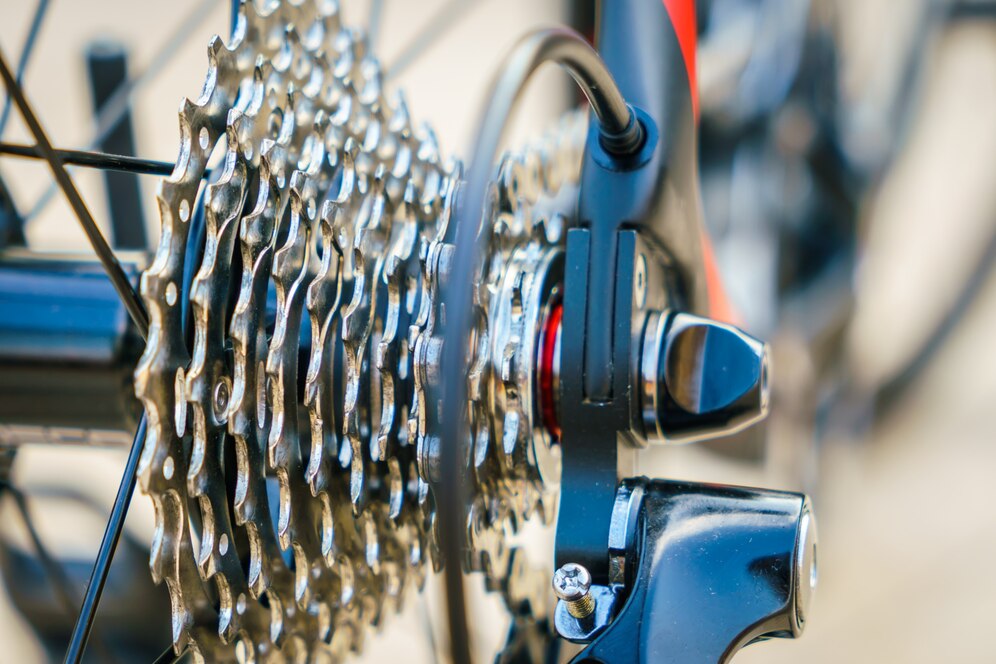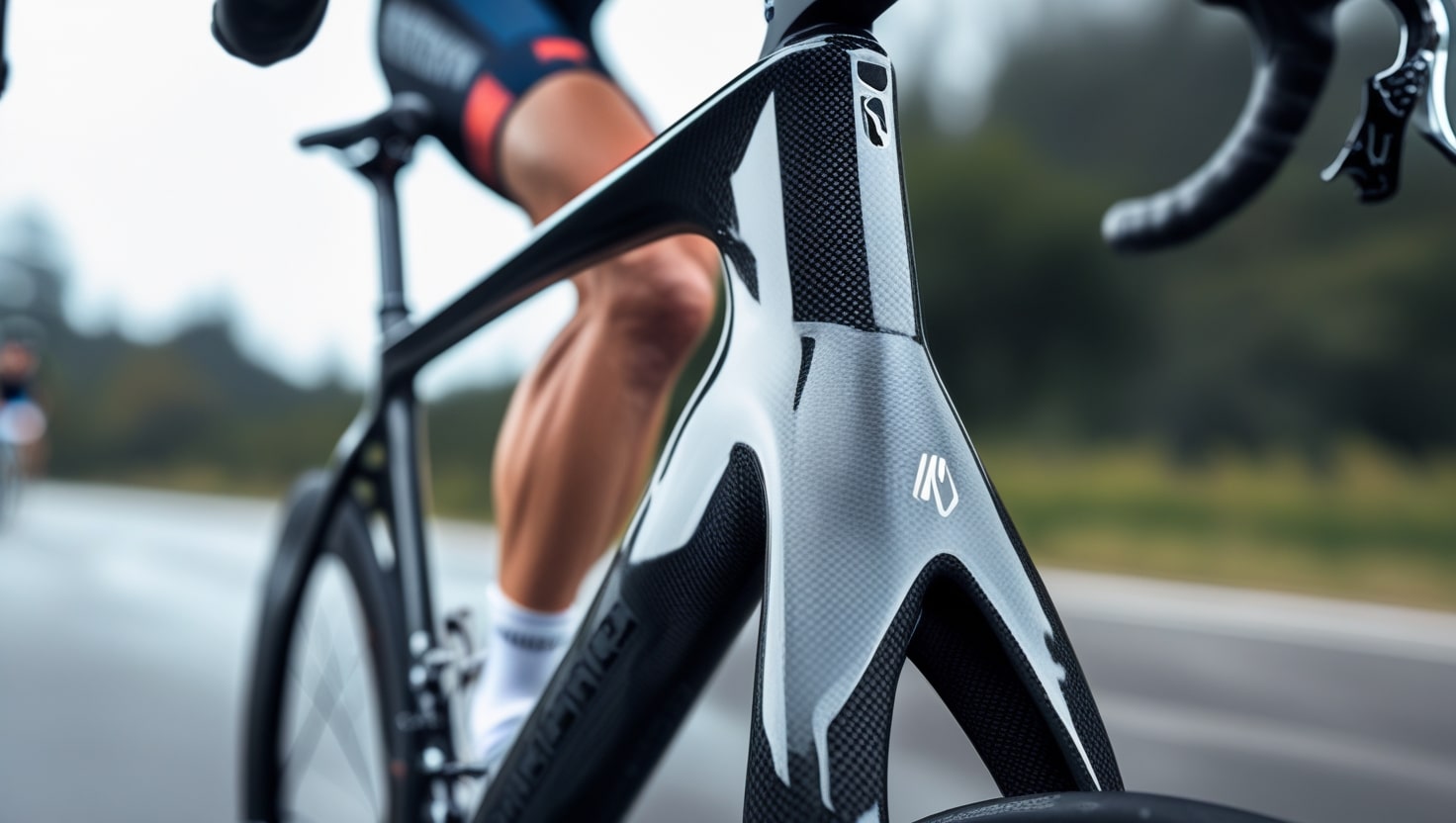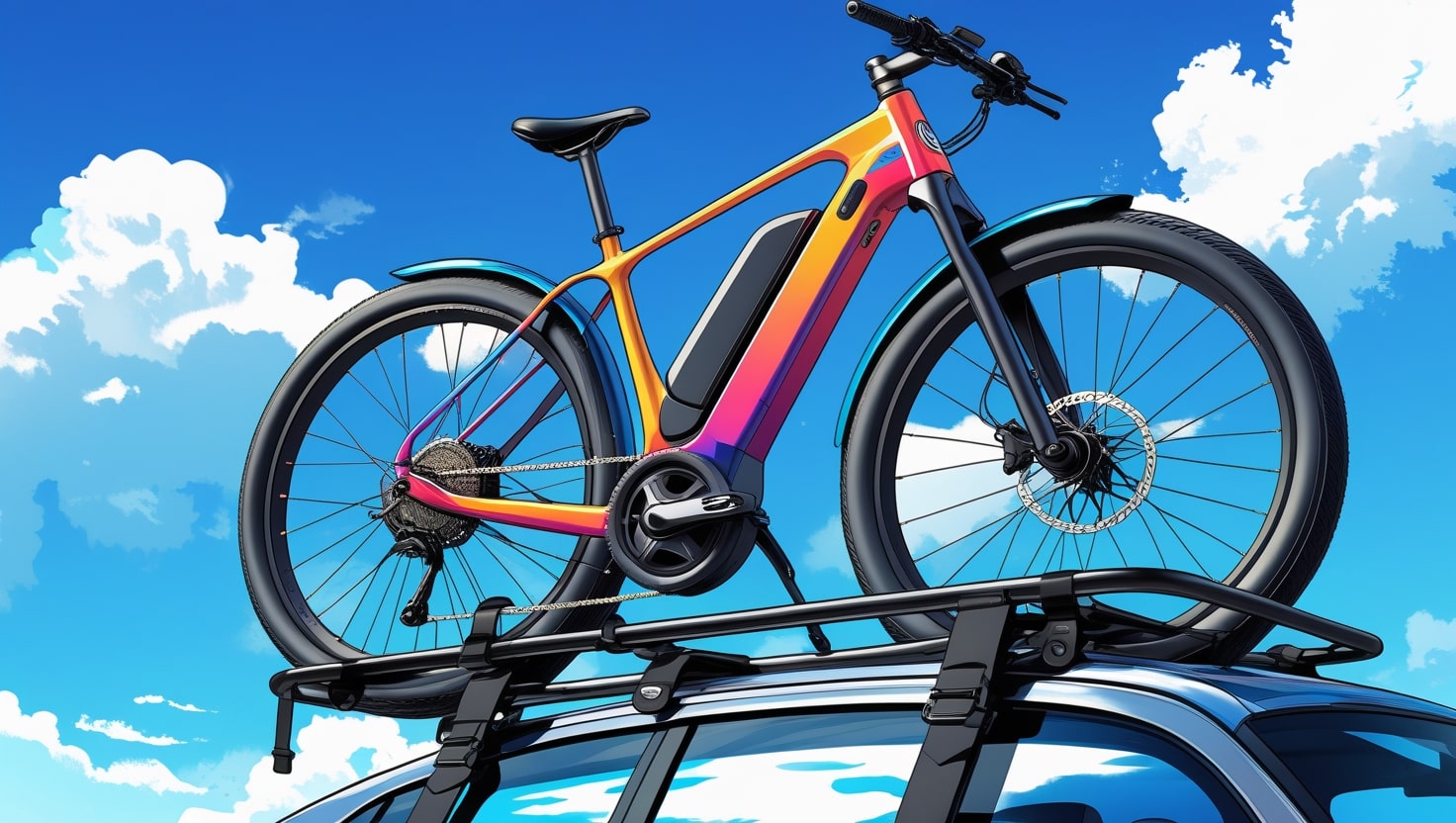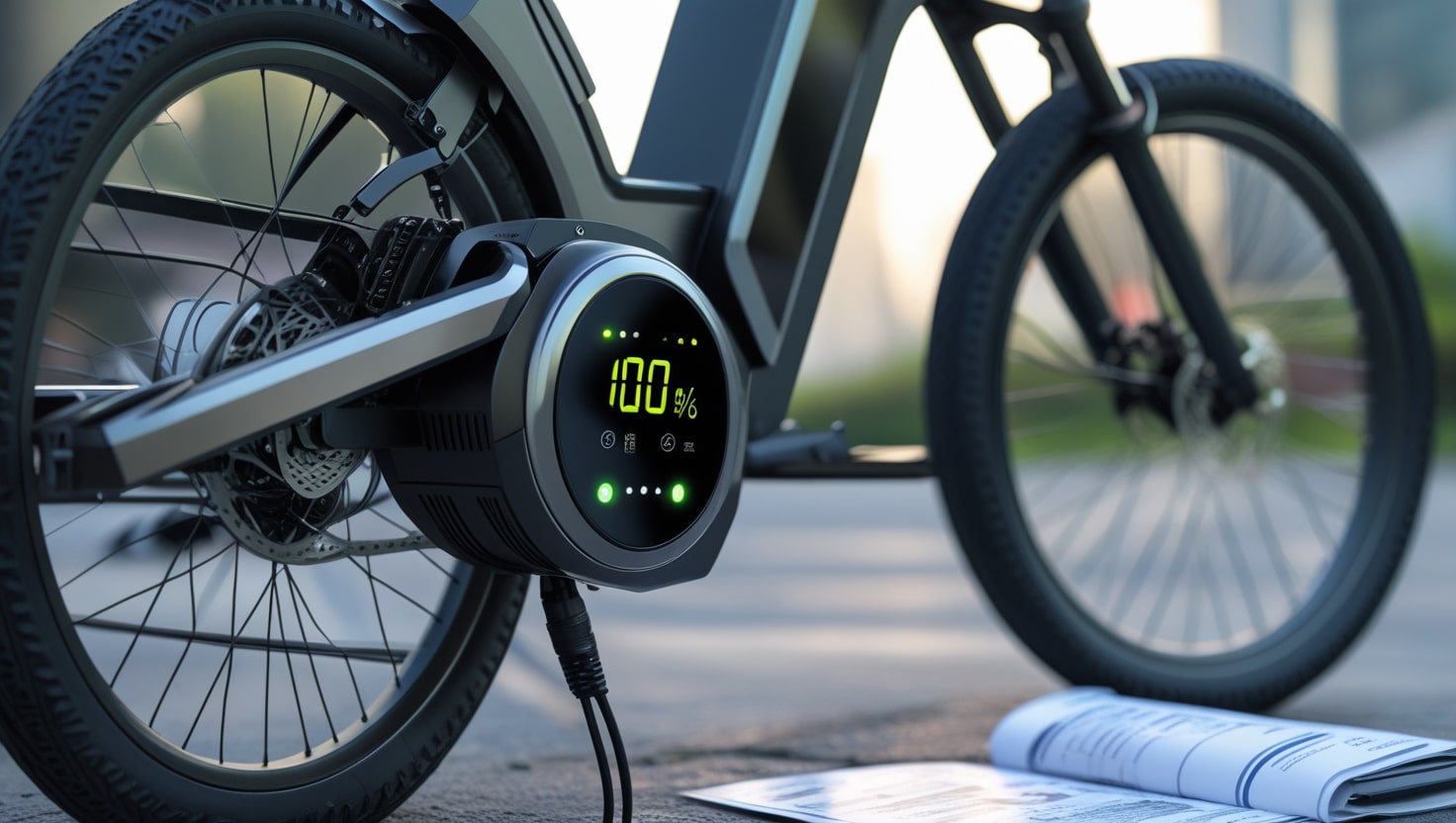A bike runs efficiently only if its chain is the right size, ensuring the smooth transfers of power from the pedals to the drive system. When riding on a mountain, your wheel needs precise engagement to move seamlessly over rough terrain. The chain must be able to transmit force properly, aligning its links so they pass smoothly over the teeth of the sprocket and gear without slipping.
Choosing the correct sizes requires a clear step-by-step guide, as sizing mistakes can lead to poor performance or excessive wear. Whether you’re replacing an old chain or installing a new one, understanding how to size a mountain bike chain is crucial for an effortless and enjoyable ride.
Related: How to stop squeaky brakes on a bike
When to replace a bike chain
Experienced riders know that a worn chain can affect performance, so keeping an eye on wear is crucial. While some prefer to change their chains based on mileage or time, the actual need for replacement depends on riding conditions and component brands, leading to some variation in lifespan. It’s better to replace a chain early rather than late, as waiting too long can cause harm to other drivetrain parts.
To confirm if it’s time, use a handy checker—this affordable tool helps check for stretch by measuring how much the chain has stretched over time. If it indicates the chain is worn, it’s best to swap it out regularly to maintain smooth shifting and longevity.
How to size a mountain bike chain
Tools needed
To properly size a chain, you need the right tool—a breaker is the most important one, as it helps remove the old chain and cut the new one to the correct length. If your bike has a quick link, having pliers can make the job easier, though they aren’t always essential.
These special pliers let you undo a master link for easy removal and help lock in a fresh one during installation. While not mandatory, having the right tools will make the process smoother and ensure your chain is fitted correctly.
Removing a worn chain

Before installing a new chain, you must first remove the old one. Use a breaker tool to cut the chain by selecting a pin and ensuring it is properly aligned with the tool. Begin to tighten the mechanism until it contacts the pin, and as you continue, you’ll hear a pop when the tool presses the pin out. Keep going to drive it all the way out, and the chain will detach. If your bike has a quick link installed, you can undo it easily using pliers. The quick link will often have a different shape or color, making it easy to identify for removal.
Measuring a new chain
Before installing a new chain, it must be cut to the correct length for your bike. Chains come in a box and are often longer than needed to accommodate a wide range of bikes and drivetrains. To get the right fit, there are different methods for figuring out the ideal size, ensuring smooth shifting and efficient power transfer.
Method 1: Count links

If you’re replacing an old chain that worked well on your bike, the easiest way to size your new one is to compare it to the old one and count the number of links. You can either lay both chains side by side on a workbench to match their lengths or simply count the total links. Once you’ve determined how long the chain needs to be, cut it with a breaker for a precise fit.
NOTE: When sizing your chain, remember that quick links count as a regular link, so if your old chain doesn’t have one, add it to your measurements. When cutting the chain, make sure the inner link always connects to the outer link to ensure a proper fit. Since most new chains use a quick link for installation, you should cut the chain so that both ends have internal links to allow for a secure connection.
Method 2: Big big + 2 links
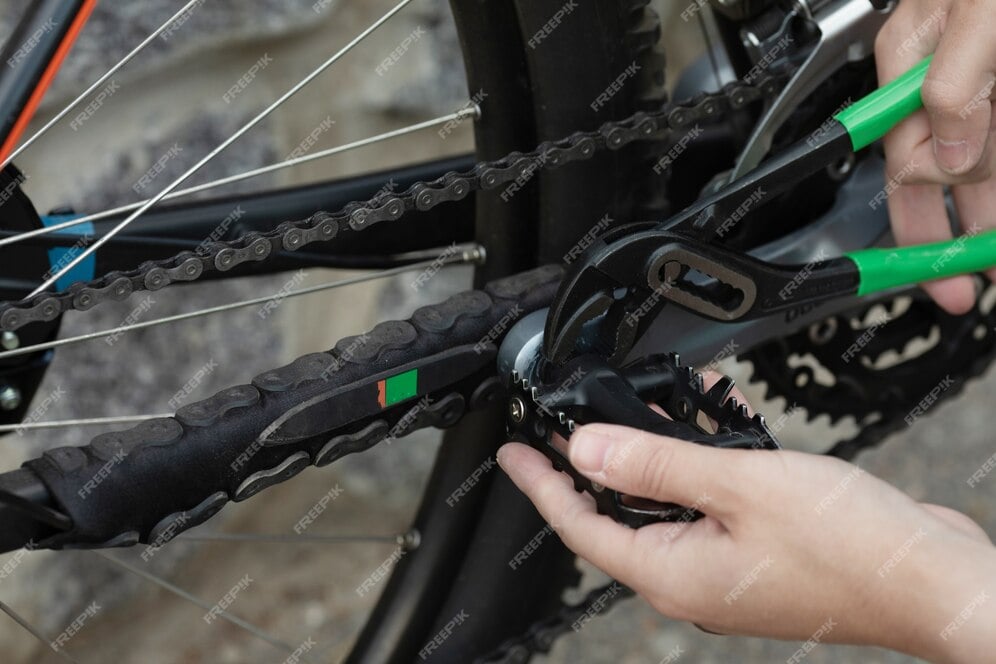
If you’re swapping to a different-sized drivetrain or installing a new chain, one of the best ways to measure the correct length is by using the big-big plus two method. Start by wrapping the chain around the biggest cogs on your drivetrain—the largest chainring and cassette—without routing it through the derailleur. Pull the chain tight and observe where it meets itself. From this point, you’ll need to add two additional links—one outer and one inner—before cutting. This ensures proper tension and allows the chain to function smoothly.
For bikes with a 12-speed 1x system, like SRAM Eagle or Shimano drivetrains, the chain needs extra length to fit a wide-range cassette. If you have a hardtail mountain bike, add four links, while full suspension models may need six. Ensuring the right chain length guarantees proper access to every gear combination, prevents excessive wear, and keeps the rear derailleur in the optimal position for smooth shifting.
NOTE: If the oversized plus-two method leaves your chain with an outer link at one end, just add an inner link to ensure proper quick link installation. If you are unsure of the length, it is always safer to lengthen the chain first, as you can always trim it later if needed.
Install the new chain

Once your chain is cut to the correct length, it’s time to route it through the derailleur and complete the installation. To install the quick link, bring both ends of the chain together and connect the two halves by aligning them with the rollers. Some quick links come with a directional arrow printed on them, so be sure it points in the direction the chain moves when you’re pedaling. After securing the link, use pliers to snap it into place or position it at the top of the drivetrain between the cassette and chainrings.
NOTE: Some rear derailleurs have a small tab that can interfere with the chain if not properly routed. To avoid unnecessary noise, make sure the chain runs through the correct side of the tab during installation, preventing any friction or shifting problems.
To lock the quick link, hold the rear brake, set the bike on the ground, and apply pressure to the pedals until it clicks into place. After the chain is installed, check that the drivetrain shifts smoothly. If needed, tweak the indexing or make a b-gap adjustment to fine-tune performance. Keep your chain clean and lubed to extend its life and ensure a smooth ride every time.
What are the dimensions of a bicycle chain?
The standard distance between links in a bicycle chain is ½in (12.7mm), which is used across most bikes. While there have been metric experiments with 10mm chains, such as those rumored to be used by Team GB on their track bikes at the Tokyo Olympics, most chains stick to the traditional size. Each chain consists of inner and outer links, with the inner ones being narrower to create a strong connection with the teeth of the chainring.
Some single-ring drivetrains take advantage of an alternating pattern of wide and narrow chainring teeth for better stability. However, in multiple-chainring setups, where the chain is frequently shifted, the teeth remain uniform to allow smooth movement.
Chain width varies depending on the drivetrain’s speeds. The roller widths are fairly consistent, measuring 2.38mm for 5-speed to 8-speed chains and 2.18mm for 9-speed and higher. The primary difference lies in the side plates, which become thinner as the number of speeds increases to ensure a proper mesh with the derailleur and gears. Understanding these measurements is key to choosing the right chain for your drivetrain.
Chain materials and construction

Most chains are made of steel, which makes them strong but also prone to rust if exposed to wet conditions without being properly lubricated. Some expensive chains have a surface treatment to avoid rusting, increase durability, and reduce friction, while others are simply designed to look prettier.
For those wanting to save weight, titanium chains are an option. Brands like KMC offer top-spec chains coated with carbon nitride, which helps minimize friction and improve longevity. These chains often feature black outer plates with inner plates available in a range of colors, giving riders both performance and style.
The design of a chain’s side plates varies between makes and models. Some chains incorporate ramping to assist with smooth shifting, while premium options include chamfered edges rather than flat plates for improved performance. High-end chains may also feature slots in the plates and hollow pins to further save weight.
Another option is a pre-treated chain designed to lower drivetrain friction. Brands like Silca and CeramicSpeed produce these chains to help reduce wear and improve efficiency for a limited number of miles, usually in dry conditions, making them a perfect race-day choice.
Can you mix and match drivetrain components from different manufacturers?
You can use different brands of chain, chainring, crank, cassette, and derailleur together, but for the best performance, it is recommended to match all components from the same manufacturer.
Which manufacturers make mountain bike chains?
Several major companies manufacture mountain bike chains, ensuring high quality and compatibility with different drivetrains. Well-known brands like SRAM, Shimano, KMC, Wippermann, and SunRace produce reliable chains that suit various riding styles and gear systems.
Should you replace the cassette when replacing a chain?
The rear cassette doesn’t always need to be replaced when changing a chain, but it’s important to check for wear. If the teeth on the gear sprockets look worn down, the cassette may not work well with a new chain and should be swapped out to ensure smooth shifting and prevent skipping.
Are there e-bike-specific chains?
Yes, e-bike specific chains are designed to cope with the extra power generated by assisted pedaling. Since e-bikes put more strain on the drivetrain, these chains are built stronger and more durable to handle the added force, ensuring smooth and reliable performance.
Related: Convert Mountain Bike To Electric
Frequently asked questions
Are bike chains directional?

Sometimes, a chain’s directionality depends on the brand and the groupset. Older chains with smaller numbers of gears are usually not directional, meaning they can be installed either way. However, recently released chains for larger gear setups may require specific alignment. For example, some chains have outer-side links that are slotted, while the inner-side ones are not.
Certain brands, like SRAM, have specific requirements for their 12-speed road chains, such as the flattop design, which must be installed the right way. If using a quick link, always check whether it is directional. Some models, like Shimano’s 11-speed option, have an arrow that points in the correct direction of travel to ensure smooth shifting and optimal performance.
Which chain checker do I need?
When you buy a chain checker, make sure it matches the number of speeds in your drivetrain. There are sophisticated options, such as digital models from maker KMC or the Park Tool CC-2, but the cheapest option is a thin, stamped metal tool that fits over a roller and has a point that slides between the links. If the tool drops fully into the slot, your chain needs replacing. If not, it still has some life left.
To get an accurate reading, always check your chain at multiple locations since wear doesn’t always happen evenly. Some tools, like the Park CC4, work on a different principle. Instead of just inserting the tool, you hold the gauge tip, apply pressure, and lower it into the chain for a precise measurement.
How do I know what chain to get for my bike?
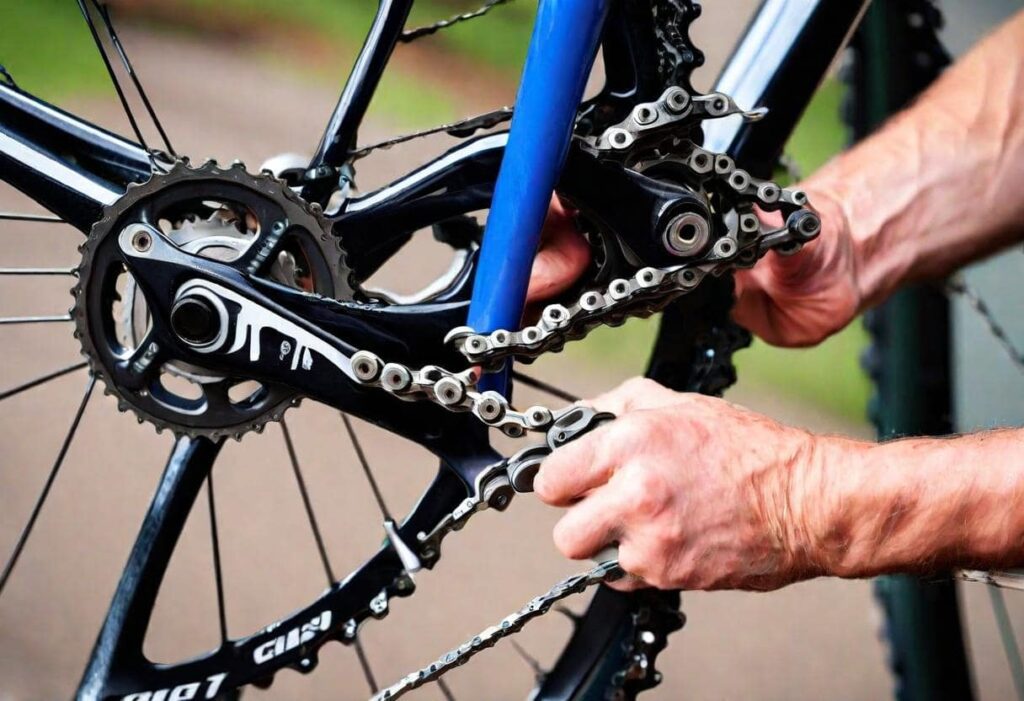
To find the correct chain for your bike, first check the number of cogs on the rear cassette, as this determines the speed of your drivetrain. A chain must match the corresponding speed, so you cannot replace an 11-speed chain with a 9-speed one due to incompatibility issues caused by thickness differences.
While some interchangeability exists among differing speeds, it’s best to pick a chain designed for your setup. Some manufacturers require using their own chains, but many third-party companies, like KMC, offer compatible options for varying groupsets.
How do I replace a chain?
To replace a chain, you’ll need a tool to push out a rivet and remove the old one. Before installing a new chain, make sure everything is cleaned thoroughly to prevent dirt from affecting performance. Next, thread the chain through the drivetrain, making sure it passes correctly over the jockey wheels on the rear derailleur. Use the chain tool to adjust the number of links to achieve the correct length, then join the ends securely for smooth operation.
How do I calculate the correct chain length?
When replacing a chain, the easiest way to calculate the correct length is to count the number of links in your old chain. Avoid measuring with a tape, as chains wear over time and can grow longer. If you are installing a chain on a bike for the first time, experts recommend wrapping it around the largest sprocket on the cassette and the chainring at the front, ensuring it is positioned correctly through the derailleurs. Bringing the ends together will show the zero point, helping you decide how many links to leave for the perfect fit.
According to Shimano, the chain length depends on the kind of ride and how the chain is connected. If using a quick link, you may need extra links. For rigid bikes like road, gravel, hardtails, and hybrids, add 4 to 6 extra links. Full-suspension bikes require more slack to handle chain pull, with Shimano recommending 5 to 7 links based on whether you use a connecting pin or a quick link.
How do I care for a chain?
It’s important to keep your chain clean and free from contamination to reduce wear and ensure smooth shifting. Using a regular cleaner is the best and quick way to remove dirt and grime. After cleaning, always dry the chain properly to prevent rust from forming. Once dry, apply a thin film of lubricant by following the lube maker’s instructions. To properly lube the chain, pedal it for 10 to 20 revolutions to allow the lubricant to work its way into the rollers, then wipe off any excess lube.
It’s also essential to re-lube your chain after a wet ride to prevent rusting. First, ensure the chain is thoroughly degreased and cleaned. Never apply lube to a dirty chain, as this will only lead to it attracting more dirt, reducing performance and causing premature wear.
How do I clean a bicycle chain?
Regular cleaning of your bike chain helps remove built-up grit and grime, which can cause excessive wear on cassettes, chainrings, and jockey wheels over time. A clean chain keeps the drivetrain moving freely and improves efficiency, especially when properly re-lubed. There are different cleaning methods, but ultrasonic cleaners are becoming common for deep cleaning, especially for riders who prefer to wax their chains for long-lasting lubrication.
Related: What to Wear Bike Ride

